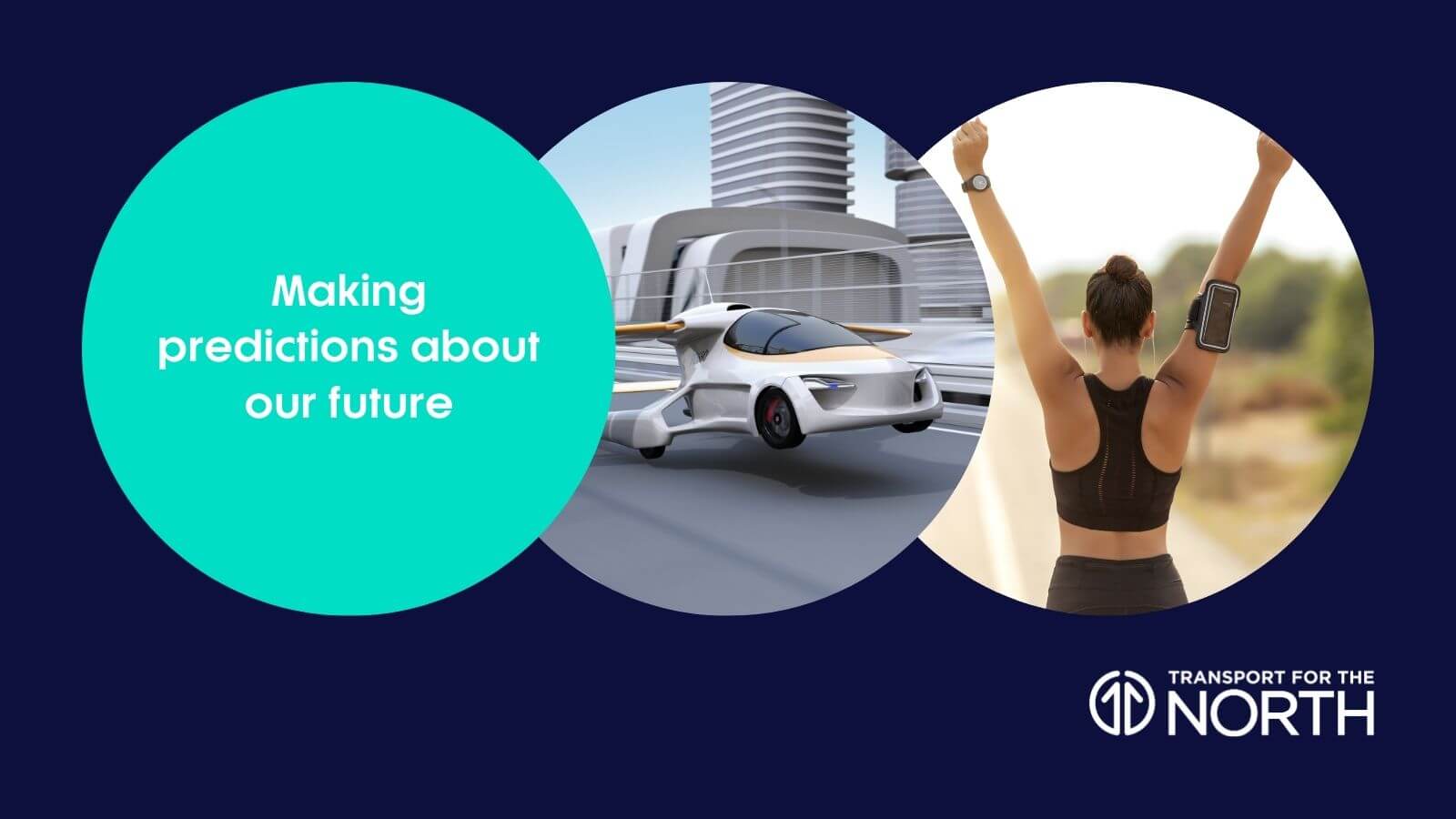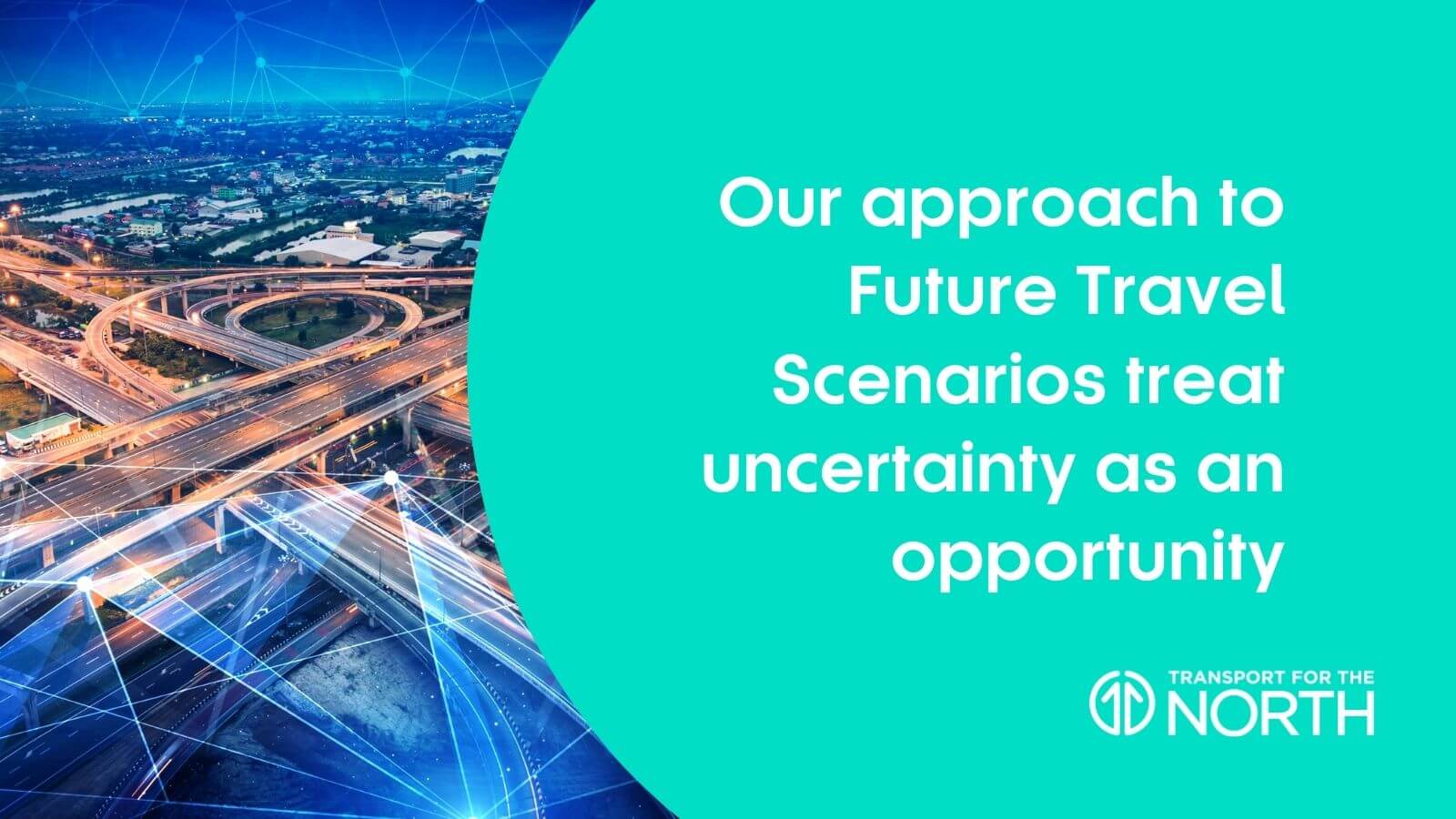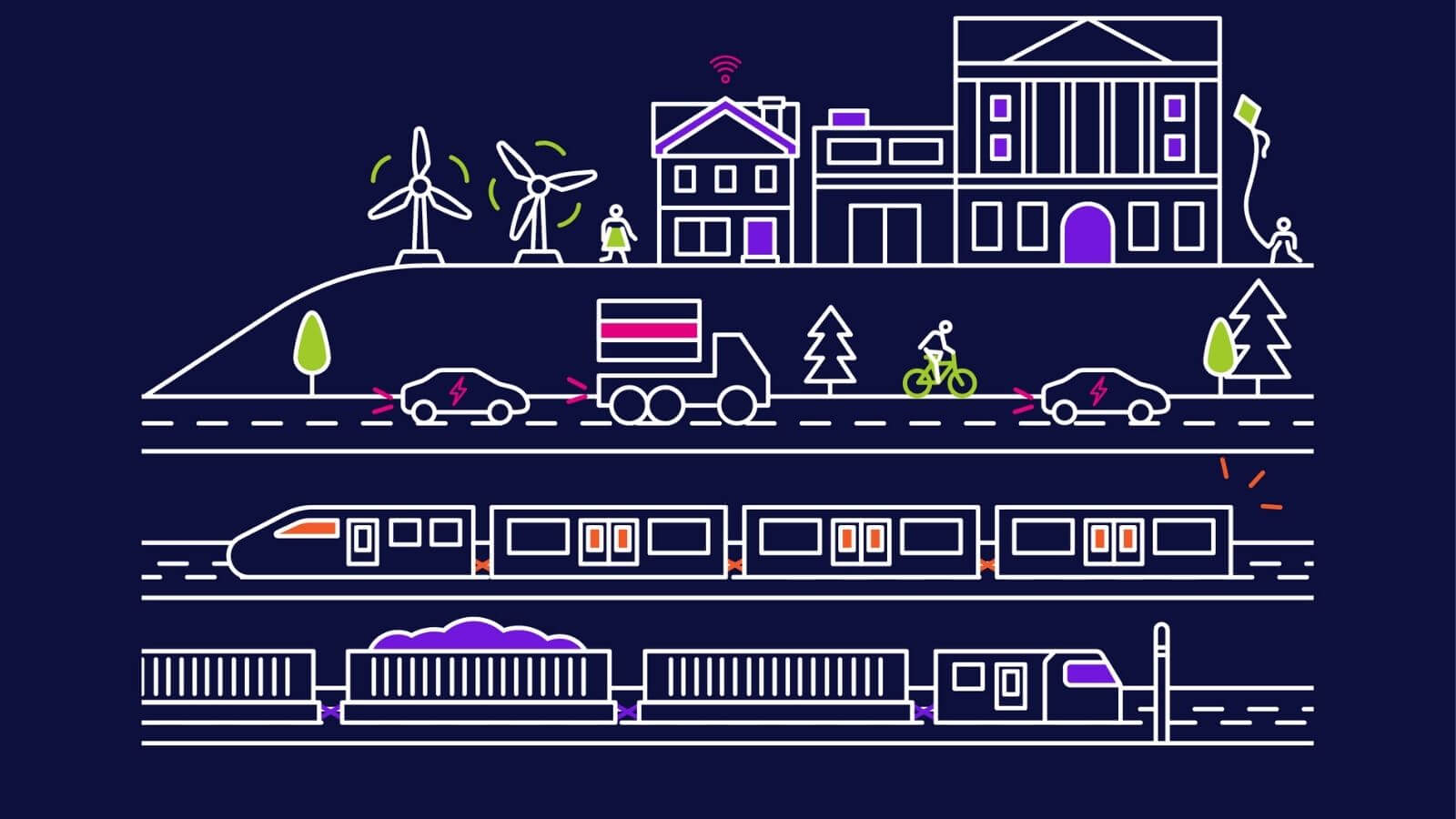Simon McGlone, Senior Planning and Strategy Officer and Jack Snape, Analysis Manager, look at how Transport for the North’s Future Travel Scenarios report can help shape investment decision-making for decades to come.
If the Covid-19 pandemic has taught us anything, it’s that things don’t always turn out the way you expect them to.
When the Prime Minister told the country on Monday 23 March 2020 that we all had to stay at home, our world changed overnight. We no longer stood on crowded train station platforms to go and work in an office alongside colleagues. For many, cars sat unused on the drive, while for others, they may have been used more frequently than previously. We realised just how finely-tuned our logistics network is, and came to truly appreciate those key workers who keep essential services running.
In more recent months we’ve seen slow returns to some of our pre-pandemic lifestyles and travel patterns, but it’s still not yet clear how this will unfold during 2021 and beyond as we continue to deal with the effects of the pandemic – including the latest lockdown restrictions and the rollout of vaccines, and what that will mean for any new transport needs and behaviours.

It’s human nature to make predictions about our future – whether that’s a world of flying cars, autonomous vehicles and jet-packs, or a person-powered, active and local future – rapid technological and social development means there’s always change on the horizon. When we think about our future transport needs, it’s important change is delivered in a way that enhances the benefits of connectivity for as many people as possible.
And given the time it takes to deliver transport infrastructure and implement strategies that will support people and businesses for generations to come, it’s important we take into account future goals when planning projects today. A major project can be at conception stage now, but the world it comes to life in could be very different.
It’s this kind of uncertainty and opportunity that has driven our Future Travel Scenarios work and what makes it so important.

Our approach to Future Travel Scenarios treat uncertainty as an opportunity, and replaces a narrow forecasting approach with a ‘decide and provide’ method that is vision-led and allows us to approach transport investment with the ambition and confidence we need to truly shape the future of our region.
We know there is opportunity in the unknown; and we also know that predictions are never 100% accurate, so by understanding the range of ways people might want to live, work, and travel within a number of broad scenarios, we can head out in the right direction of travel, even if the exact route we’re going to take isn’t yet confirmed.
A lot of issues or opportunities that will affect our future travel patterns and methods are accelerating now – Covid-19 aside we’re looking towards decarbonisation, electric vehicles, and other alternative fuels, active travel, shared mobility, increased smart contactless ticketing and use of new technology and data. This is an exciting time for the transport sector, with lots of change on the horizon to stimulate and shape how we’re going to be getting around in the coming decades.

Our four Future Travel Scenarios set out potential worlds that we can use as a tool to explore, assess and develop our transport projects:
By doing rigorous investment analysis within these broad futures and the evidence they provide, we can look to future-proof our plans without having to know the answer to every question. We can see how a particular project would fare in a world where we rely on digital connectivity rather than physical commuting. We can analyse what increased electric vehicle use could mean for the infrastructure we need across the North’s varying place types. And by considering transport holistically alongside social, environmental, and economic issues, we can ensure we’re taking a “whole system” view that will create opportunities in the most plausible eventualities.

We have taken proactive action here to look ahead and give local, regional, and national policy-makers a look at where we may be in years to come, to help put their investment decision-making into the context of future ways of living, working, and getting around.
The methodology will provide a launchpad for further work to strengthen our evidence base, and act as a building block to support future statutory advice and updates of our Strategic Transport Plan and Investment Programme.
Through our Future Travel Scenarios we’re putting ourselves in a better place to deliver our vision of “a thriving North of England where modern transport connections drive sustainable economic growth and support an excellent quality of life” by adapting and tailoring our transport plans and making the most of the challenges and opportunities we face.